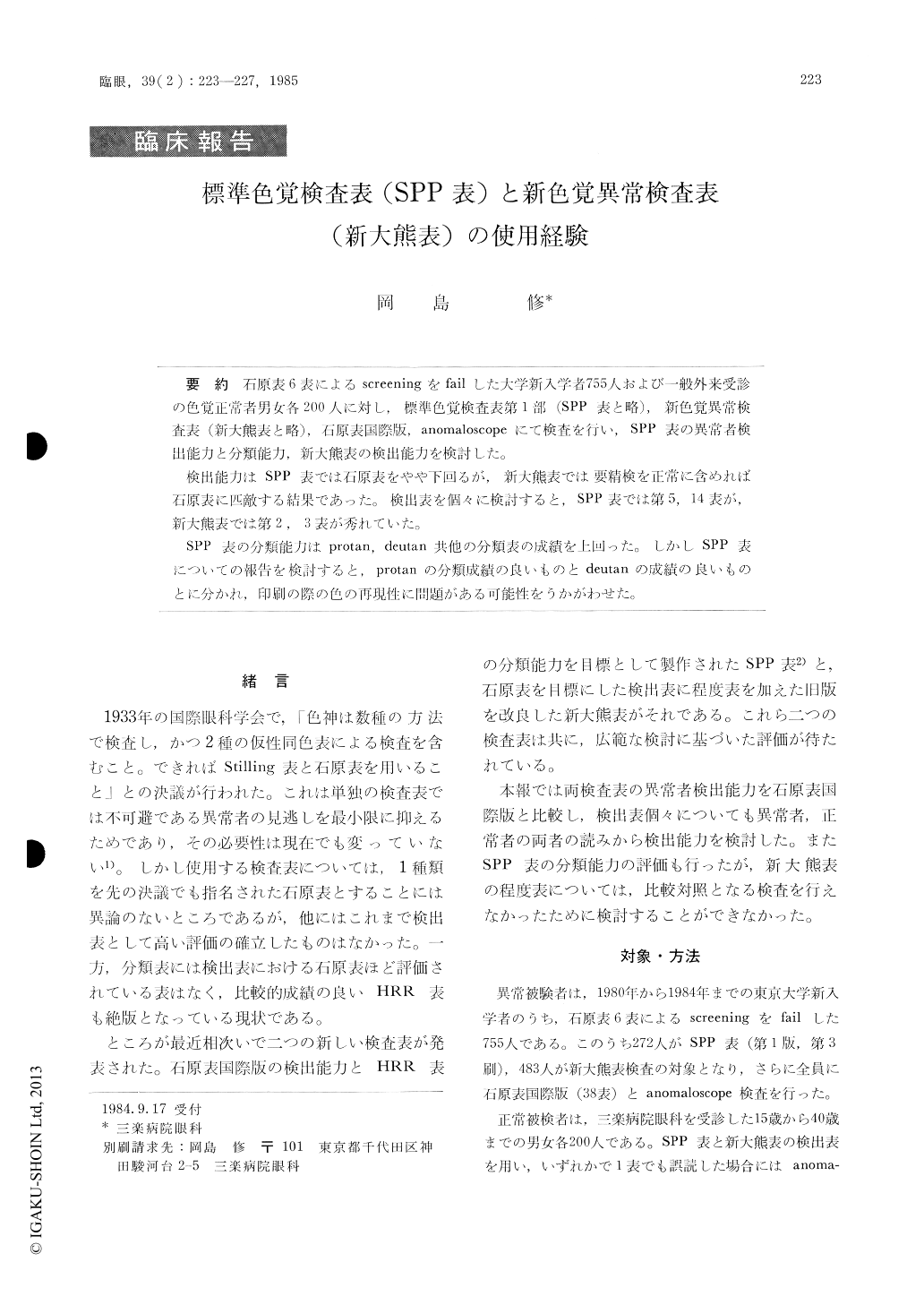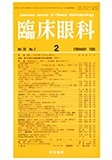Japanese
English
- 有料閲覧
- Abstract 文献概要
- 1ページ目 Look Inside
石原表6表によるscreeningをfailした大学新入学者755人および一般外来受診の色覚正常者男女各200人に対し,標準色覚検査表第1部(SPP表と略),新色覚異常検査麦(新大熊表と略),石原表国際版,anomaloscopeにて検査を行い,SPP表の異常者検出能力と分類能力,新大熊表の検出能力を検討した.
検出能力はSPP表では石原表をやや下回るが,新大熊表では要精検を正常に含めれば石原表に匹敵する結果であった.検出表を個々に検討すると,SPP表では第5,14表が,新大熊表では第2,3表が秀れていた.
SPP表の分類能力はprotan,deutan共他の分類表の成績を上回った.しかしSPP表についての報告を検討すると,protanの分類成績の良いものとdeutanの成績の良いものとに分かれ,印刷の際の色の再現性に問題がある可能性をうかがわせた.
A series of 755 college freshmen who failed screenig with 6 plates of Ishihara Test and 400 adult outpatients with normal color vision were tested with Standard Pseudoisochromatic Plates (SPP), New Okuma Plates, Ishihara Plates and anomaloscope in order to clarify the effectiveness of the SPP and New Okuma Plates in the detec-tion and classification of defective color vision.
In terms of detecting ability, the SPP was slight-ly inferior to Ishihara Plates. The New Okuma Plates were very effective in detecting abnormal cases, but a large number of normal cases had to be processed through detailed evaluation.Therefore if the latter cases are included among the normal group, the New Okuma and Ishihara Plates are considered to be equivalent in value. In terms of individual splate, the most effective plates in distinguishing normal from mild abnormal cases were No. 5 and 14 SPP and No. 2 and 3 Okuma Plates.
The classifying capability of SPP was higher both for protans and dcutans than other plates. There are some incongruities in literature on this aspect that are possibly related with problems in uniformity in color reproduction during the printing process.

Copyright © 1985, Igaku-Shoin Ltd. All rights reserved.


